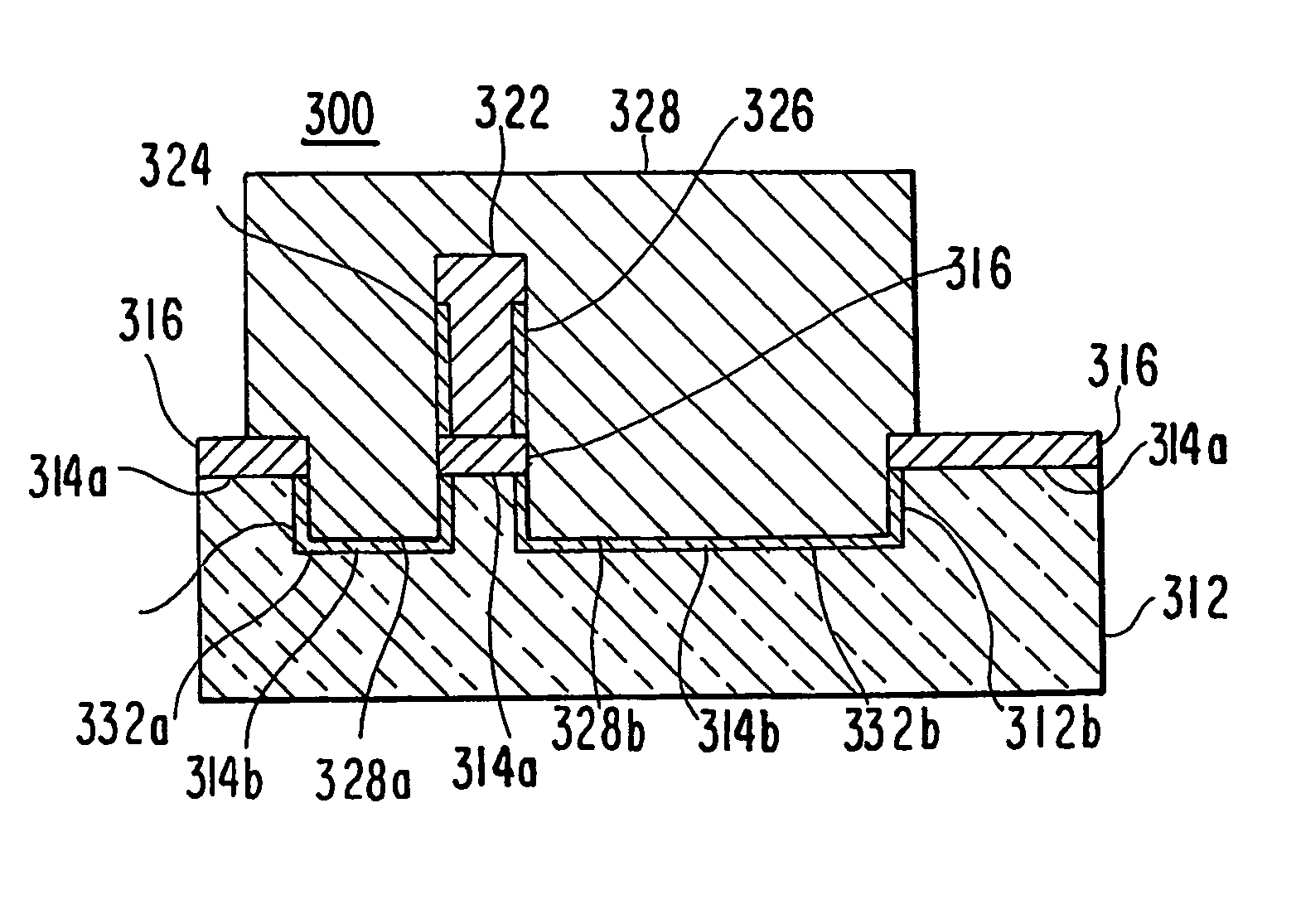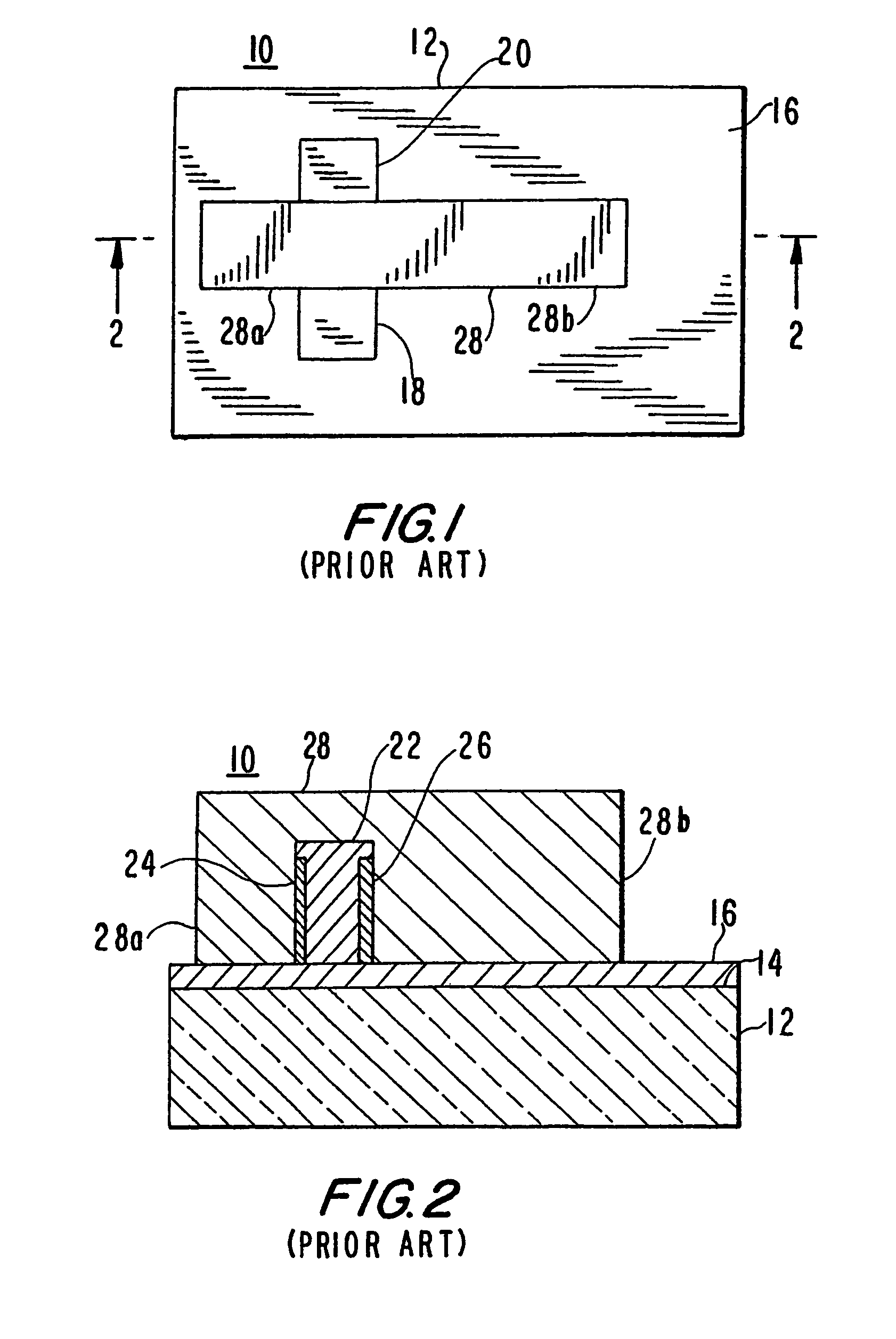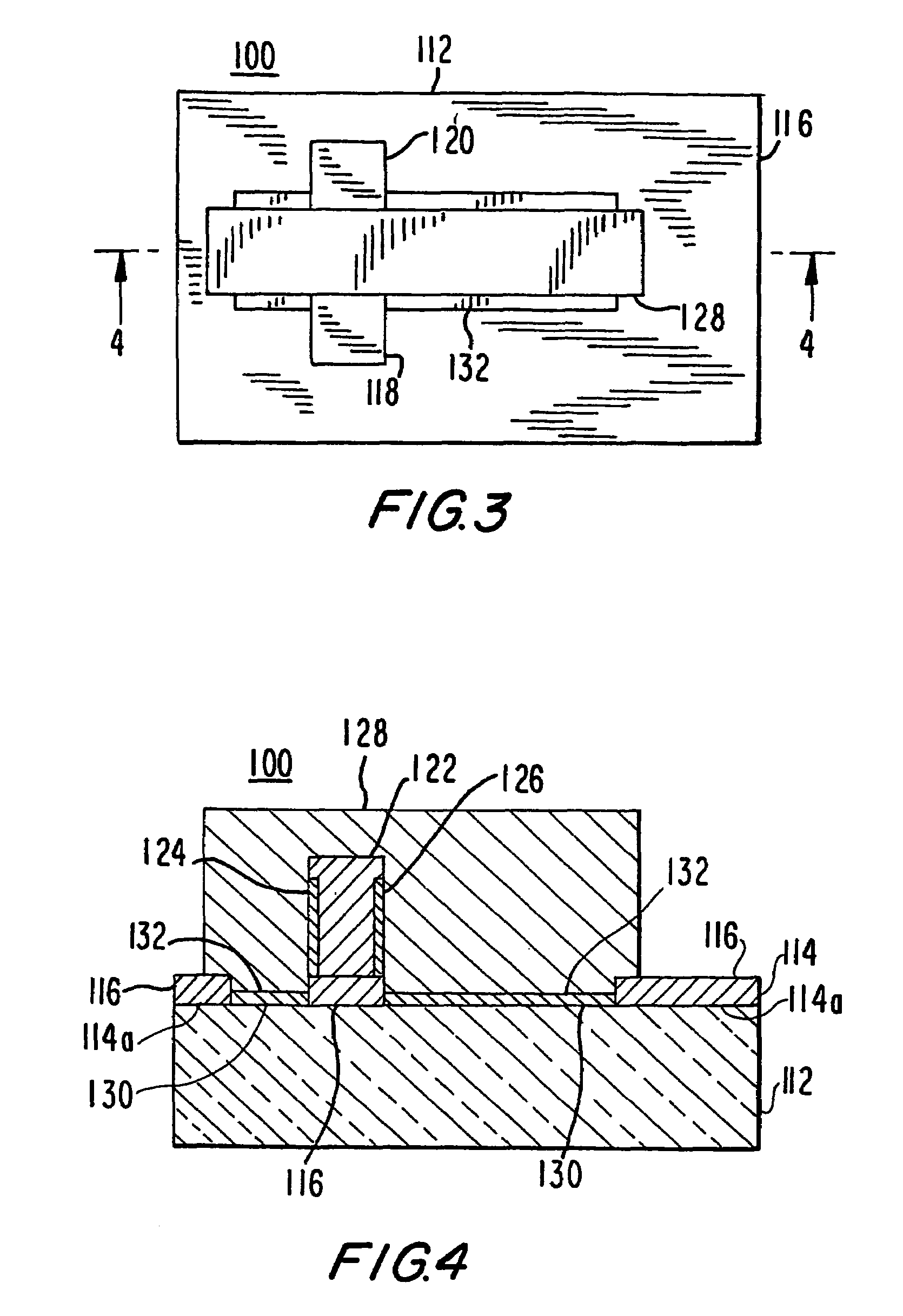Semiconductor memory device with increased node capacitance
a node capacitance and memory device technology, applied in semiconductor devices, radio frequency controlled devices, electrical devices, etc., can solve the problems of increasing difficulty in preserving such stored data, correspondingly low node capacitance, and physical size drop of memory cell elements, so as to achieve less insulating
- Summary
- Abstract
- Description
- Claims
- Application Information
AI Technical Summary
Benefits of technology
Problems solved by technology
Method used
Image
Examples
Embodiment Construction
[0025]In the following discussion, the prior art and the embodiments of the present invention will be described in the context of FinFETs. A FinFET is a double-gate MOSFET that is formed by defining and etching a thin, vertical fin in the silicon body of an SOI wafer to connect the source and drain regions. Polysilicon gate electrodes are defined surrounding the fin. In the embodiments discussed below, the double gates are on the right and left sides of the fin and are connected by a portion of the gate passing over the fin. When the FinFET is turned on, the current flow is from source to drain along both the left and right vertical edges of the fin.
[0026]It will be apparent to those of ordinary skill in the art that the following discussion and the accompanying drawings do not reference the complete structure of FinFETs generally or any FinFET in particular, but rather schematically define and compare only those elements of a FinFET useful for explaining the present invention. The ...
PUM
 Login to View More
Login to View More Abstract
Description
Claims
Application Information
 Login to View More
Login to View More - R&D
- Intellectual Property
- Life Sciences
- Materials
- Tech Scout
- Unparalleled Data Quality
- Higher Quality Content
- 60% Fewer Hallucinations
Browse by: Latest US Patents, China's latest patents, Technical Efficacy Thesaurus, Application Domain, Technology Topic, Popular Technical Reports.
© 2025 PatSnap. All rights reserved.Legal|Privacy policy|Modern Slavery Act Transparency Statement|Sitemap|About US| Contact US: help@patsnap.com



